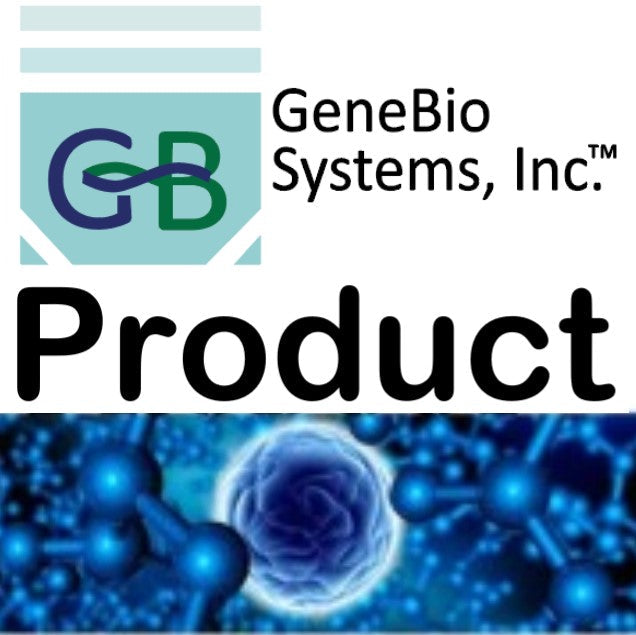Gene Bio Systems
Recombinant Human Ubiquitin-like protein ISG15(Isg15)
Recombinant Human Ubiquitin-like protein ISG15(Isg15)
SKU:CSB-RP097444h
Couldn't load pickup availability
Size: 200ug. Other sizes are also available. Please Inquire.
In Stock: No
Lead time: 10-20 working days
Research Topic: Immunology
Uniprot ID: P05161
Gene Names: Isg15
Organism: Homo sapiens (Human)
AA Sequence: GWDLTVKMLAGNEFQVSLSSSMSVSELKAQITQKIGVHAFQQRLAVHPSGVALQDRVPLASQGLGPGSTVLLVVDKCDEPLSILVRNNKGRSSTYEVRLTQTVAHLKQQVSGLEGVQDDLFWLTFEGKPLEDQLPLGEYGLKPLSTVFMNLRLRGG
Expression Region: 2-157aa
Sequence Info: Full Length
Source: E.coli
Tag Info: N-terminal GST-tagged
MW: 44.3 kDa
Alternative Name(s): Interferon-induced 15KDA proteinInterferon-induced 17KDA protein ;IP17Ubiquitin cross-reactive protein
Relevance: Ubiquitin-like protein which plays a key role in the innate immune response to viral infection either via its conjugation to a target protein (ISGylation) or via its action as a free or unconjugated protein. ISGylation involves a cascade of enzymatic reactions involving E1, E2, and E3 enzymes which catalyze the conjugation of ISG15 to a lysine residue in the target protein. Its target proteins include SERPINA3G/SPI2A, JAK1, MAPK3/ERK1, PLCG1, TRIM25, STAT5A, MAPK1/ERK2 and globin. Can also isgylate: DDX58/RIG-I which inhibits its function in antiviral signaling response and EIF4E2 which enhances its cap structure-binding activity and translation-inhibition activity. Exhibits antiviral activity towards both DNA and RNA viruses, including influenza A and B virus, sindbis virus (SV) and herpes simplex type-1 (HHV-1). Plays a significant role in the control of neonatal Chikungunya virus (CHIKV) infection by acting as a putative immunomodulator of proinflammatory cytokines. Protects mice against the consequences of Chikungunya virus infection by downregulating the pathogenic cytokine response, often denoted as the cytokine storm. Plays a role in erythroid differentiation. The secreted form of ISG15 can: induce natural killer cell proliferation, act as a chotactic factor for neutrophils and act as a IFN-gamma-inducing cytokine playing an essential role in antimycobacterial immunity
Reference: Identification of a ubiquitin family protein as a novel neutrophil chemotactic factor.Owhashi M., Taoka Y., Ishii K., Nakazawa S., Uemura H., Kambara H.Biochem. Biophys. Res. Commun. 309:533-539(2003)
Purity: Greater than 90% as determined by SDS-PAGE.
Storage Buffer: Tris-based buffer,50% glycerol
Storage: The shelf life is related to many factors, storage state, buffer ingredients, storage temperature and the stability of the protein itself. Generally, the shelf life of liquid form is 6 months at -20℃/-80℃. The shelf life of lyophilized form is 12 months at -20℃/-80℃.
Notes: Repeated freezing and thawing is not recommended. Store working aliquots at 4℃ for up to one week.


